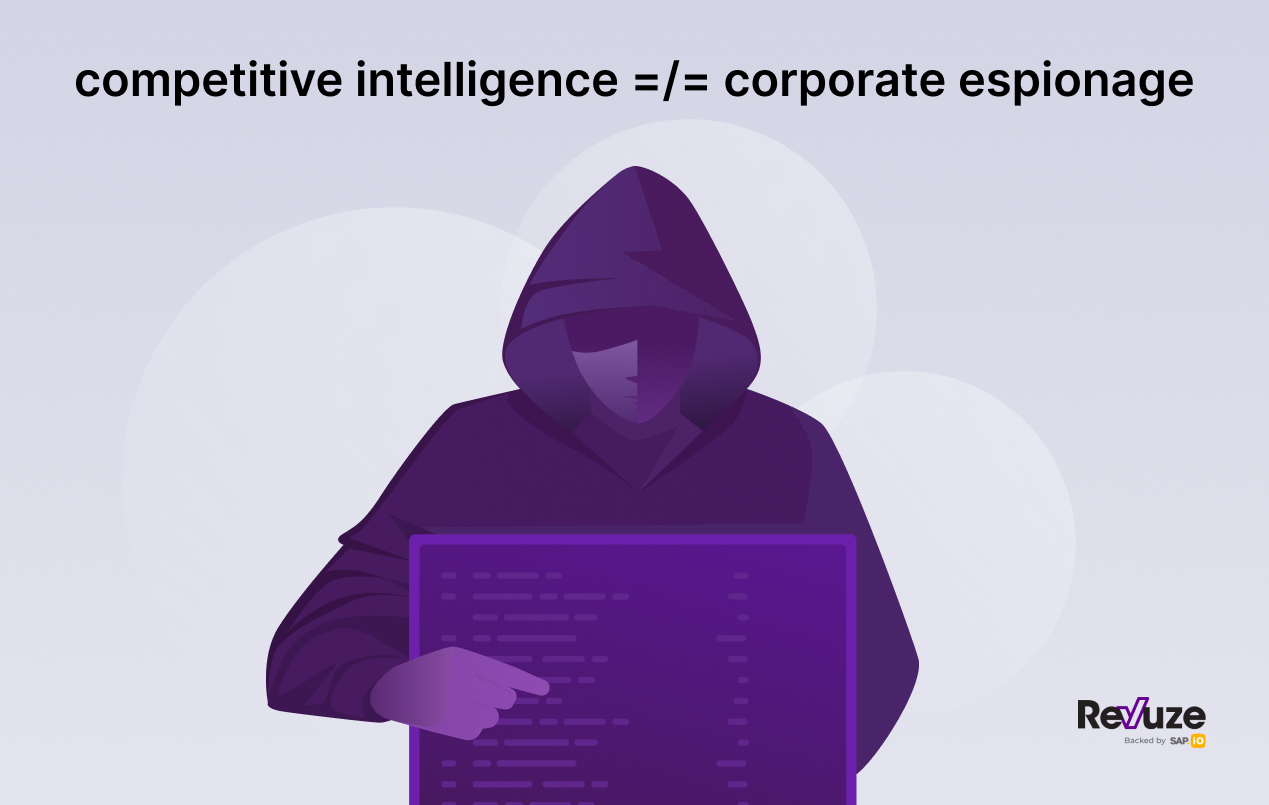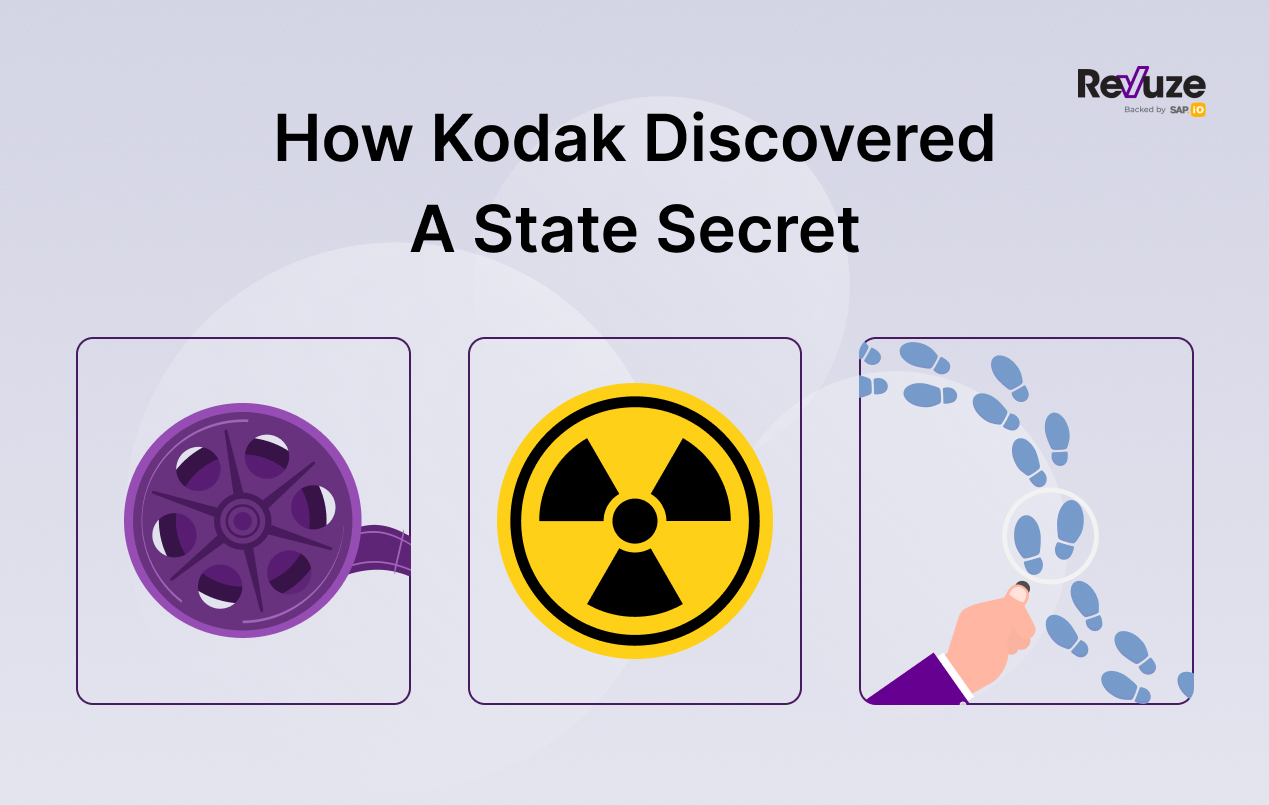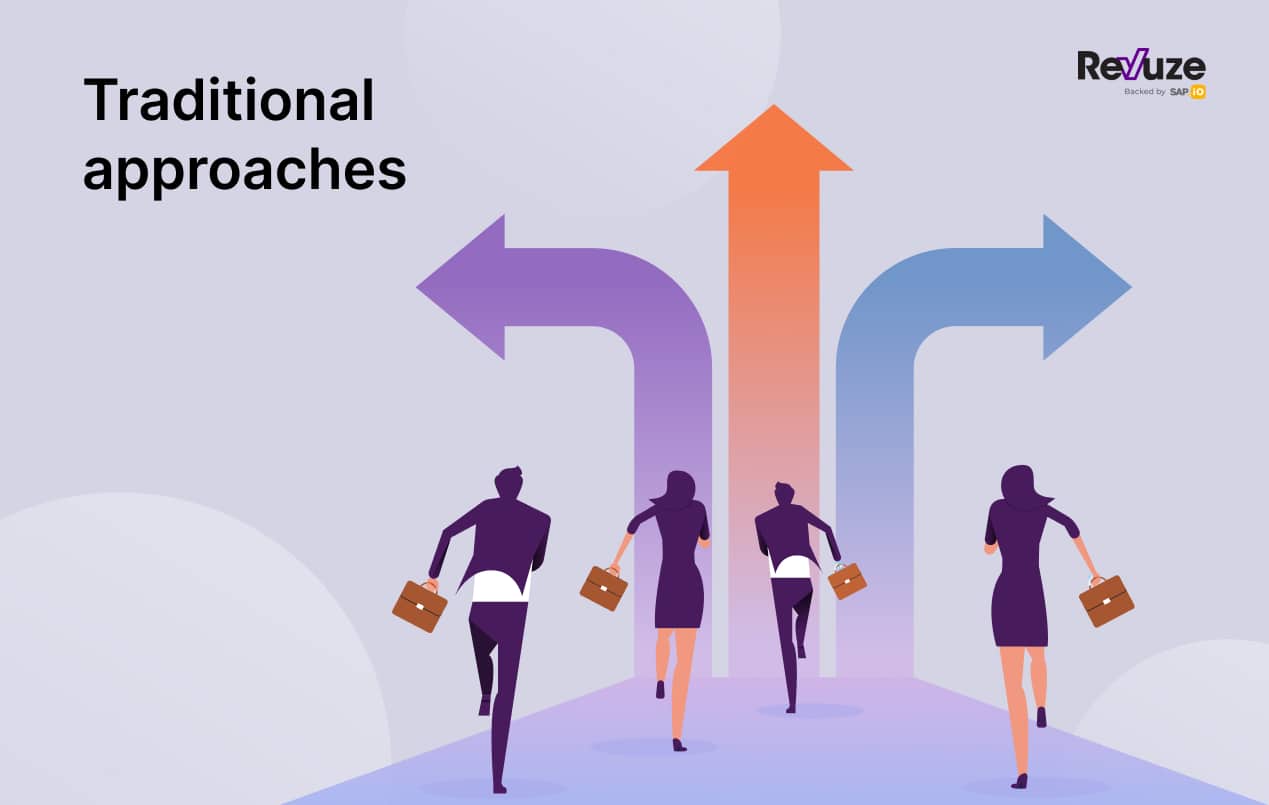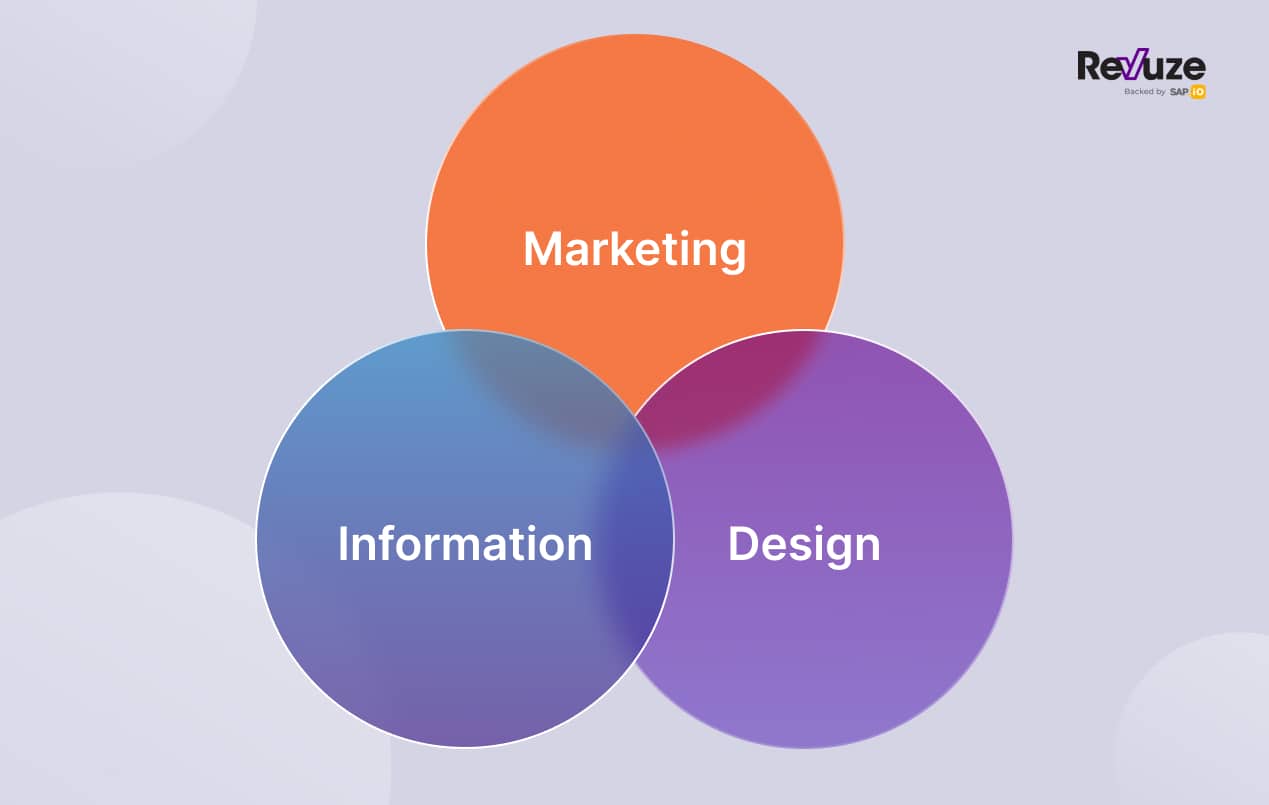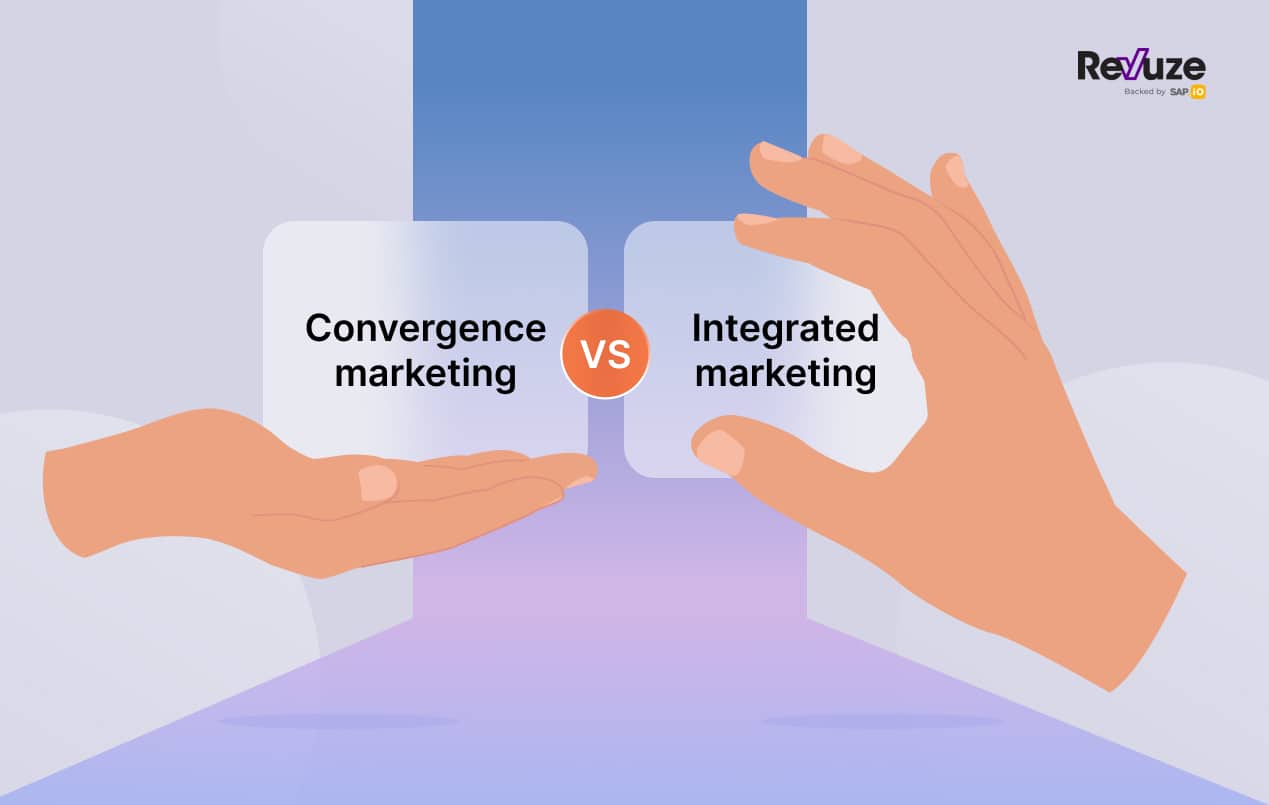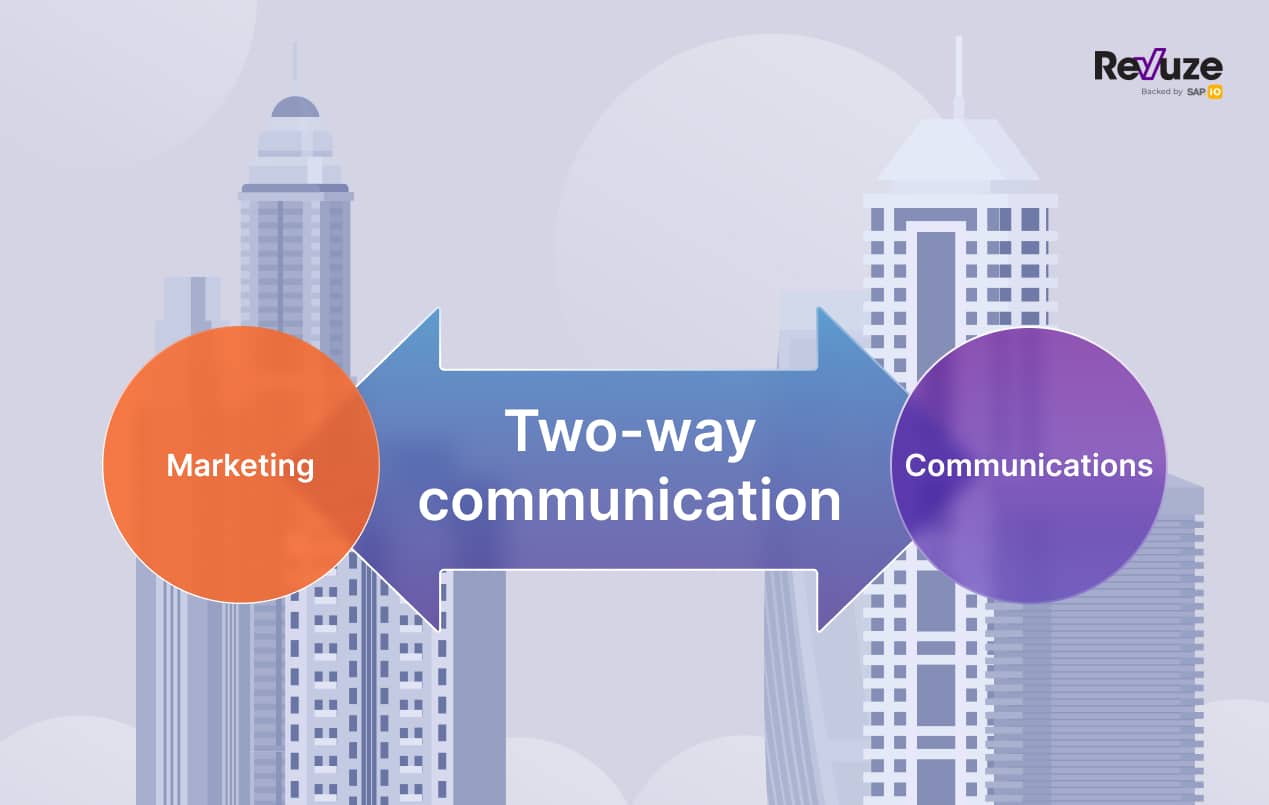Brand equity is the ability to be recognized and acknowledged as more than simply another face in the crowd. Some brands have it, and even fewer know how to build it. With time and effort, you can learn how to become a master of brand equity, similar to giants like Apple & Microsoft. Your Journey Starts Here.
Brand equity is a great tool to have in today’s ever-changing competitive markets.
The main benefit of having strong brand equity is that consumers will continue considering your products even when the cost is high.
Consumers perceive them as having innate value or quality solely because they associate it with your brand.
Being the top brand whenever consumers think of your market sector is the ideal position, but it’s not quite that straightforward.
I’m sure you’ve heard of the Pepsi vs. Coca-Cola, Apple vs. Microsoft feuds, etc. No one side can claim to truly be at the top of the market, despite all having strong brand equity.
Still, it’s a great position to be in.
In this guide, we’ll take you through the steps of creating strong brand equity, allowing you to dominate the conversation.
Let’s begin with the basics.
What is brand equity?
The definition of brand equity is a brand’s perceived value according to consumers. It can also be defined as the level of positive feelings that consumers have about a brand when compared to others in the same market space.
For example, if you order a rum and coke at a bar, you might be asked if Pepsi is okay. Some would answer yes, some no — that’s brand equity. If you buy a new gaming console and are dead set on having a PlayStation? You guessed it, that’s brand equity once again.
Some brands even dominate the market to the point where their name becomes the commonly used word for the item they produce.
Coca-Cola and Sellotape, for example, have become synonymous with their markets, despite being only one among dozens of brands. That’s strong brand equity at work.
If you have strong brand equity, you have a dedicated customer base and the option to charge premium prices.
When launching a new product, you’re guaranteed to get customers’ interest no matter what it is.
That said, you can’t coast by on brand equity alone. You must ensure your products are still top-quality and are within the market’s expectations. Microsoft learned that the hard way with Windows Vista and even Sony with the $600 PlayStation 3.
Keller’s brand equity model (aka brand equity pyramid model)
It’s worth mentioning the Keller Brand Equity model here. We won’t cover it in too much detail as that would be an article in and of itself, but let’s go over it to give you a general idea.

Keller’s brand equity pyramid model states that to gain strong brand equity, you need to shape the way your customers think and feel about you.
This starts at the base level with establishing your brand identity, then works its way up the pyramid by asking questions about what your brand might want to achieve.
It’s a step-by-step process that makes thinking about how you plan to position yourself and what feelings you want to evoke in your customers.
Each stage contains crucial components that evoke brand loyalty, so be sure to give it a look if you want to build your brand up to the next level.
The impact of brand equity on customer interactions
Now that you know what brand equity is, you might be asking yourself – “is it worth it?”
It’s true that building brand equity is a long and difficult process, but the results are well worth it.
Let’s take a look at some of the most tangible benefits, ones that you can point to when an investor asks why you’re putting so much effort into building your brand’s equity.
Customer spending
Brand equity impacts customer spending in two main ways.
First of all, if you have a high brand equity you can charge more for a product than you otherwise might. In fact, it’s often expected of you to do that. So much so consumers will become suspicious of a product line if you don’t.
When was the last time you saw a new iPhone going for less than $1,000? It would seem suspicious if it did, right? That’s Apple’s brand equity at work.
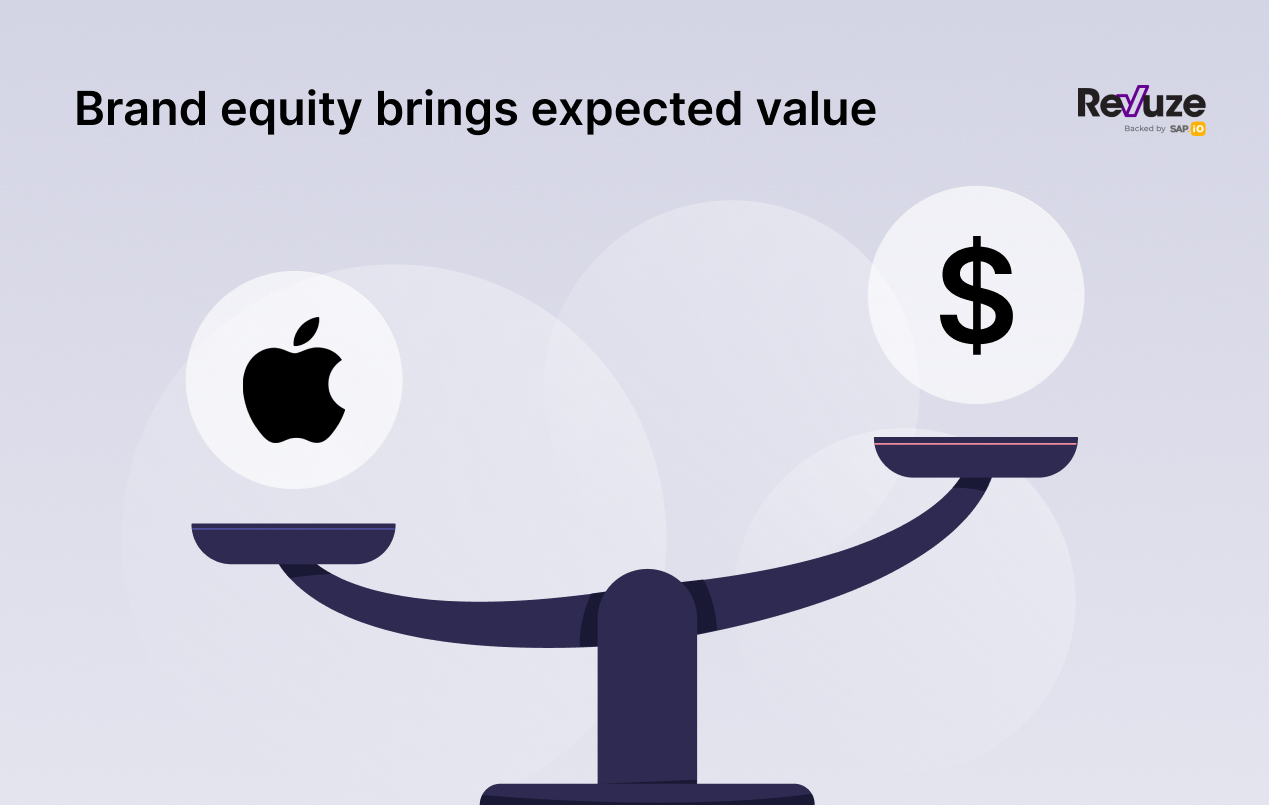
The second way in which customer spending is impacted is in making decisions about what to buy, especially in cases where a customer has little knowledge of the products in that market sector.
When a not technologically aligned parent decides to buy their child a simple phone for calls and texts, they’re left to rely on what little they know about a brand’s reputation.
What do they pick? An obscure and niche phone with specific uses? Or a well-known brand such as Apple or Samsung that they’ve probably heard of in passing? Probably the latter, right?
That’s brand equity in action.
Customer loyalty & advocacy
I’m sure you’ve come across a friend or acquaintance who buys only from a specific brand and won’t accept replacements. I mean, what other laptop could replace my trusty Macbook?
I’ve grown to love it and how it functions so much, that buying another Macbook when it’s time to replace it is a no-brainer. And there are millions like me.
That’s the epitome of customer loyalty, which is different from customer retention (coming up in a few paragraphs).
Customer advocacy is when that loyalty is taken one step further.
In essence, the customer becomes someone who will promote your brand to their friends and acquaintances, sometimes to the point of convincing them to switch brands.
Brand equity is of great help here. Not only do customers have a much easier time advocating for a brand that is well known, but the actual process of loyalty can be sped up tremendously.
Customer loyalty relies on great experiences, that’s true, but the opinions of others also matter. A HubSpot study on the topic found that 81% of consumers would rely on referrals from friends and family to choose & try a brand over an advertisement. This means that you’ll likely need a recommendation simply to get on the customer loyalty ladder in the first place!
Having strong brand equity means that people are more open to trusting you from the get-go, which makes climbing that ladder from customer to loyal customer to brand advocate that much quicker.
Customer retention
Your customer retention rates are one of the key metrics that help your business keep going. After all, if your customers leave unsatisfied and don’t return it’ll hurt your performance in the long run. A mere 5% increase in your retention rates can bring up to a 25% increase in profits!
Your churn rate, or the rate at which you lose customers over time, is another measure that’s similar to customer retention, just in the opposite direction.

It’s calculated by taking the number of customers who stopped interacting with you over a set period of time and dividing it by the number of customers you had at the start of the time period, then converting it into a percentage.
If your churn rate is high, your customer retention rate is low. Churn is often a more useful metric to look at than retention since it’s more directly comparable over different periods of time.
So, what does brand equity have to do with customer retention? After all, retention rates are solely about customer experience, right? Well, not entirely.
Research has shown that customers care about more than simply their experiences with you, with 80% being willing to change brands based on “a company’s social responsibility, inclusiveness, and/or environmental impact.” How does news on these topics spread? Via brand equity of course.
An apt metaphor to describe this would be meeting someone for the first time. Consider what would happen in the following circumstances.
You meet someone who is clearly in a bad mood, is rude to you, and snaps over minor things. You’d feel insulted, maybe even a little scared. You mark this person in your brain as bad news, and won’t want to deal with them again.
You then tell people that you know about this encounter, and how you felt. They have met this person before and reassure you that they aren’t normally like this, that it must have been a bad day or something similar.
From this, you decide to revise your opinion, and the next interaction you have with them is great! Clearly, it was just an off day and they’re not normally like this.
Having strong brand equity keeps customers coming back to you, even when they’ve had one bad experience.
It’s a sense of trust that the consumer population as a whole has with you, which means that individuals are willing to give you another shot even when they didn’t like what you had to offer the first time around.
Brand equity’s impact on your internal workings
Brand equity doesn’t just impact your dealings with customers, rather it shapes the very way your business will operate.
There are plenty of strategies and tactics that big brands with strong brand equity can use that smaller, less well-known ones cannot.
One example that springs to mind is the TV show Rick and Morty, which premiered its third season completely unannounced back in 2017.
Any other television show would spend time hyping up a new release, using advertisements, press releases, and other means to keep the buzz going.
Rick and Morty’s strong brand equity meant that it didn’t need to do that in order to keep viewers engaged.
There are more internal benefits to having strong brand equity than pickles and portals. Here are a few.
Stock prices
Stock prices are a great indicator of how your business is doing. Of course, this is only applicable if you actually have them up for sale, but let’s go over them briefly anyway. If this isn’t relevant to you, feel free to skip to the next section.
Strong brand equity will increase your stock prices, as it brings with it the expectation that the brand will continue to perform well. This in turn can also increase your brand equity in a feedback loop, though there is a limit to it.
So, why are stock prices important? Well, they’re an indicator of how well your brand is doing in its market, as well as a status symbol that can open doors to you that would otherwise be closed.
Higher stock prices are also attractive to investors who will continue to put funding into your brand if they think it’s going to give them a good return on investment.
Easy expansion of product lines
Creating new product lines is never easy, however with brand equity you can make the process a bit smoother.
Imagine a completely unknown business releasing a new line of soda drinks. They’re unusual flavors that haven’t really been tried before, and overall the public seems uncertain. Would you buy that drink, or would you avoid it for your regular soda?
Now, let’s flip the circumstances. Let’s say that Coca-Cola releases lots of new and unusual flavors. You know the brand, and know what they usually make is considered good quality, so you’re more likely than not to try it out at least once.
There is actually a great real-world example of this with Walkers, the UK-based potato chip company that regularly comes out with absurd flavors such as Breakfast, Fish & Chips, and even Squirrel! That’s not a joke, they actually did this.

Thanks to their strong brand equity, Walkers have been able to turn their experimental product lines into a game of sorts, with the most popular limited-time flavor being kept and turned into a regular product.
Not only did the public do their research for them, but they actively engaged with their product testing and expansion.
Imagine a no-name brand releasing these flavors, they’d likely be considered a joke. That’s what brand equity is truly capable of doing!
Greater influence on the market as a whole
Strong brand names bring with them a sense of dominance.
With strong brand equity, you’ll be able to negotiate with others from a position of power rather than equal footing or from a position of weakness.
With this position at the negotiating table comes opportunity. Partnerships, sponsorship deals, and collaborations, all these are possible only if you have a strong bargaining position.
You also open yourself up to greater investment potential and maybe even get better deals from your suppliers once you’ve made a name for yourself.
Five ways of measuring brand equity
Alas, measuring brand equity isn’t straightforward. There are many factors to consider, and which one you put weight on will depend on your business model, industry, etc.
Further, brand equity isn’t something you can measure in cold numbers. Still, there are a few tried and tested brand equity analytics you can use. We’ve laid out five of them below for your consideration.
Competitive analysis
Competitive metrics set you up against your competitors and see how you’re doing compared to them.
It’s a more aggressive form of analysis that takes their marketing campaigns and yours, sees their results, and tells you how well you’re doing in comparison. If your competitors are lagging, that means you’re leading, and vice-versa.
Other factors you can look at to compare brands include relative customer sentiment, acquisition rates, social media engagement, etc.
Remember though, just because your competitors are below now doesn’t mean you can relax. They’ll be looking for ways to improve just as you are, and if you stop to watch, you’ll be left behind!
Financial data
Another metric you can use to measure brand equity is financial data.
Market share, profits, revenues, prices – these all tie into how well your brand is doing, since more brand equity correlates with more customers. Compare these to those of previous years or quarters, and you’ll be able to measure brand equity data over time.
Customer lifetime value is another strong indicator.
Essentially it’s the value that a customer brings to you during the entirety of their total interactions with you.
CLV = Average purchase price Average purchase rate Average customer lifetime
Strong brand equity correlates to higher CLV since loyal customers will bring in more revenue for you overall. Conversely, if you need to keep re-attracting customers, it might end up lowering their overall value to you since acquiring a customer is more costly than keeping a current one.
Also worth mentioning is the cost of acquiring new customers, which is a huge indicator of brand equity.
If said cost is high, it means that it takes a lot of incentive for a consumer to switch from a competing brand to yours, meaning your brand equity is low, and you need to work on your image.
Brand awareness
Brand awareness is another abstract quality that’s hard to measure, but nevertheless, it’s very valuable when you’re looking at your brand equity.
To put it simply, if consumers don’t know about you, then they won’t buy from you. Further, if they know of you only vaguely, you won’t be their first thought when looking for a product.
Having high brand awareness means that you’re synonymous with the market you’re in – like the examples of Coca-Cola and Sellotape mentioned earlier.
Being so well known comes with certain risks to your brand, as you lose copyright on any name that becomes the commonly used term for an item, but it’s a definite sign that you’re well up there in people’s minds.
Coca-Cola managed to retain its trademark since the commonly used term is the nickname Coke. Sellotape, However, lost theirs when the term was deemed genericized enough.
Ways you can measure brand awareness include:
- Surveys.
- Store traffic.
- Search volume.
- Google search rankings.
These aren’t the end all be all, but they’re a good start. You can also look to social media for hints, but this information will be highly polarized due to the nature of such spaces.
After all, when would you be more likely to post on social media? After a routine, bog-standard experience, or one that was absolutely awful?
Customer sentiment
Customer sentiment is about feelings, specifically customers’ feelings towards a particular product or brand, depending how you measure it.
Customer sentiment is a measure of how strong the emotions associated with your brand are, and how positive or negative they are.
It’s especially important in today’s markets, as 86% of customers are willing to spend more after a positive experience with a brand.
Generally, customer sentiment is generated by surveys or similar methods, asking customers to rank their experiences based on how they felt about their interactions with you.
However, it can also be found by scraping review data with sentiment analysis or analyzing social media chatter.
It’s not straightforward at all to measure customer sentiment, and you may need to use specialized platform like Sentimate to analyze the data for you.
Brand audits
Something to consider when you’re analyzing your brand’s equity is what’s the total value of the brand itself, or what it contributes to the business simply by existing.
There are a myriad of factors you can measure when doing this, but depending on who you are and what you do some will be more important than others.
In general, things to consider when auditing your brand are:
- The cost to build the brand. How much money did you pump into advertising, trademarks, etc.?
- The market value of the brand, or how much value it brings to stamp it on a product. Can you charge more for a branded product compared to a generic equivalent?
- The income value of the brand, or how much money it brings in by making customers aware of your products. Can you launch a new product and expect high sales, or would you need to put funds into advertisement?
How to build & develop brand equity (with examples)
Brand equity develops in two distinct ways.
Firstly, there’s the way in which awareness about a particular brand can spread over time from person to person naturally. This is often overlooked as a method of building brand equity as it is a slow process but nevertheless is important.

The second way is to build it yourself, taking action to increase your brand’s visibility, reputation, and relationships with consumers.
We’ve outlined below the processes by which these two methods take place, as well as how you might go about beginning the latter.
How brand equity develops organically
Brand equity is something you’d ideally want to craft, however, it’s also something that can develop naturally over time.
Back in the 1950s, for example, they didn’t have the knowledge we do on how brands can build equity for themselves, yet Ford was still considered a top-tier manufacturer of cars.
This happened because information can spread organically from person to person by word of mouth, which increases brand equity without any input from the brand itself.
Let’s take a look at the process by which this happens.
Awareness
In the first stage, a consumer becomes aware of your brand’s existence. This can be via spotting products on shelves, seeing advertisements, or simply by word of mouth.
They will have no immediate opinion on them beyond what others might have told them and their immediate gut response to anything of your brand’s image they’ve seen.
At this stage, it’s not likely that a person will buy from you, but a small number of them might do so. If they do, they skip the next step and go straight to the third one.
Recognition
Next, the person in question will come across your brand again. This time they’ll recognize it, and it won’t be completely unknown to them.
Their prior experience with your brand will add to the current one, forming an opinion.
This is where good advertisement comes into play, as many potential customers simply gloss over a brand at this stage if it doesn’t catch their eye, forget about it, and do not progress further along in the process.
Trial
In the third step of the process, a consumer will feel comfortable enough with your brand to test one of your products. This might come after coming into contact with your brand just a few times, or it may take longer.
The important part of this step is that the person takes the leap from consumer to customer. They’ve invested money into you, and their opinions will be highly polarized by their experiences with your product or service.
If the customer likes what you have to offer, it’s likely that they’ll come back. If they don’t, they won’t, and might even badmouth you. This fact is why businesses will often advertise their generic products more, leaving the more niche ones aside as fewer customers would prefer those as their first experience with the brand.
Preference
Next, a customer who has had good experiences with your brand will begin to prefer you to others in the market. This step absolutely requires that you get the previous one right, with most potential advocates straying from the track at this point.
It’s not enough to simply be good, you see, you have to be better than their previous brand in order to convince them to prefer you. It’s been shown time and again that humans are creatures of habit, and won’t change their habits unless given an incentive to.
In this case, that incentive is a better experience than your competitors provide.
Loyalty
When a customer has had repeated good experiences with a brand, they will not only prefer it but begin to recommend it to others.
After all, wouldn’t you want your friends to have a good time just like you did?
It’s at this stage that a customer can be considered an advocate for your brand. They will spread information on you to another person, who will then begin this whole process all over again as they’ve just become aware of it.
Advocates don’t just help spread awareness either, their efforts can be seen at every step of the brand equity process.
- If you’re aware of a brand but haven’t yet tried it out, someone recommending them to you might convince you to give them a go.
- If you’ve tried out a brand, but haven’t committed to them, the opinions of others might help sway you.
- If you’ve tried out a brand, and had a single bad experience, hearing about the good experiences of others might convince you to give them another try.
- If you have a preference for a brand but aren’t comfortable talking about them to others, seeing another person do so might put you at ease.
Keep in mind, however, that not everybody finishes these steps. Some may simply prefer not to air their opinions so openly, others might simply be stubbornly stuck to their current brands. That’s okay though, not everyone needs to be an advocate in order to spread brand equity!
Building brand equity yourself
Brand equity spreads organically, though this is a slow process. In order to speed things up, there are several things that you can do in order to increase your brand equity artificially.
These factors really dive into the why and how of your brand. Consumers want brands that stand for something, that have a purpose and a meaning behind them.
You need to have more tangible business goals than simply “be successful and make money”, and they need to be ones that consumers can relate to in order to truly create brand equity.
The sections below aren’t steps per say, but rather overarching guidelines that you should always keep in mind when attempting to build your brand equity. There’s no point at which you can say you’re finished, you should instead be constantly analyzing your brand and the world around it.
Understanding your brand’s drive
The purpose of your brand needs to be clear in order to build strong brand equity. If you take a look at the most prominent brands today, you’ll find that they put their purpose and drive at the forefront of their communications.
That’s not to say that they all have the same messages or goals. Each brand has its own unique approach, meaning you can’t simply copy someone else’s drive if you want to set yourself up as unique.
So, what kind of messages are there? Let’s take a look at two prominent examples in the tech industry – Apple and Microsoft.
Apple
Apple’s stated purpose is to stretch the limits of technology, to create things that no one else can. To that end, they portray themselves as providers of future technology.

Apple’s advertising tends to focus on the brand itself, more than the products, which has allowed them to break away from their initial focus on computers and into phones, tablets, and even TVs.
Overall, Apple’s strategy has been to present itself via dazzling and simplified displays that cling to people’s minds. It’s certainly worked, with their advertisements being some of the most memorable and creative in recent years.
Microsoft
In contrast to Apple, Microsoft portrays itself as reliable, down-to-earth, and hard-working. In other words, similar to your average working Joe. Instead of being a futuristic, out-of-this-world brand that dazzles you, they stick to the practical aspects.

Microsoft positions itself as the good old reliable company that will never let you down, one that keeps working people in mind.
While certainly less exciting than Apple’s dazzling displays there’s no denying that the straightforward, practical-centered message resonates with a lot of consumers worldwide, resulting in Microsoft’s systems being the most used by far.
Of course, a brand’s drive can change over time. Markets change, technology evolves, and the needs and desires of consumers change too. A business that aims to provide dial-up internet service would find it extremely difficult to attract customers today, for instance, despite it being a fairly attractive, low-cost option just 20 years ago.
Developing your brand’s message
When you’re creating messages that consumers will encounter, it’s important to make sure that they’ll find them appealing and interesting in order to further engage with you.
In other words, it’s not just what you say, but how you say it too.
The key element of your brand’s message is taking your drive and translating it into real-world problems that consumers face. Specifics and details are extremely important, as consumers are put off by vague wording and ill-defined tones.
So, how do you find out what consumers would relate to? In one word, data.
- Consumer opinion surveys can tell you directly what worries them.
- Search traffic is a great indicator of what topics are growing in importance.
- Social media is a goldmine of opinion data and is searchable and segmentable.
- Reviews and ratings of similar products or services to yours can give insight into consumer desires.
One thing to keep in mind is that deciding your message isn’t something that you do once and then stick to. As times change, you need to change too, and altering your message in order ot appeal to consumers more is standard practise for most brands.
Driving awareness of your brand
Being aware of a band means more than acknowledging its existence. You want customers to understand both what you stand for and how you plan to uphold your values.
Awareness comes with long-term strategies, and taking actions that align with your values. It’s a trust factor, one which will only come after you’ve demonstrated your commitment to upholding the values you’ve stated.
The most important thing you can do with your awareness strategies is to be consistent. Consumers connect the most with brands that they can form emotional bonds with, which onloy happens if that brand is consistent in its ways. You’ll get more out of long-term, loyal customers than you ever would by simply partaking in one-and-done sales.
In short, focus on the broader future of your brand instead of simply the next transaction. While you might profit in the short term, you’ll lose out in the long run.
Maintaining consistency & transparency
Once you’ve established your brand, don’t change it unless you have to.
This might seem completely opposed to everything we’ve spoken about in the previous few sections but bear with us here.
When we say keep your brand the same, what we mean is the personality and tone behind your brand needs to remain consistent in order for customers to continue to relate to you.
While there have been a few instances of brands radically altering their image in order to refresh themselves – see Savage Wendys – it’s generally better to maintain your image.

If you do pivot, make sure to stay consistent. Wendy’s has been roasting ordinary people and antagonizing their competition on Twitter for over half a decade now, and has become something of a sensation.
The customers that you retain tend to do so because they relate to you and your brand. If you wipe the slate clean, you’ll have to re-acquire loyalty from them all over again.
Sometimes, newer isn’t always better. Then again, that’s up to you to decide.
Customer experience
Customers are at the heart of brand equity. News can travel faster than ever in the age of the internet, and bad news always seems to spread the fastest.
The solution? Simply providing a good customer experience.
Brands aren’t defined just by what they do anymore, they’re also known for how they do it. Unless being rude to your customers is part of your appeal, and yes, there are actually businesses that do this, you need to put great customer experience at the heart of your brand.
Social media is a great place to let customers air their praises and grievances to you. By taking note of the former you can continue to provide great experiences in the future, and by responding to the latter you’ll be potentially turning a negative into a positive. Almost all brands, even smaller, local ones, have some kind of social media presence.
An often overlooked way to gain insight into what kind of experience your customers want with you is simply to ask them. While it’s not always possible to get real-time feedback, asking your customers how you did at the end of each interaction can get you detailed information on how your strategies are working.
At the end of the day, the customer is king – at least when it comes to brand equity, anyway.
Real-life examples of building brand equity
All this talk of brand equity sounds very impressive, but you might be wondering – if it’s all hypothetical, nothing guaranteed, what’s the point of it?
Well, we’ve gathered below some real-life examples of how brand equity was built, as well as the lessons you can learn from them.
Maggi
You might know Maggi as a provider of cheap, filling instant noodle snacks. What you might not know is that they were banned in India in 2015, after regulators determined that their products weren’t as free of MSG as they claimed, and even contained lead!
The validity of these tests was later called into question, but you’d expect there to be some damage to their reputation … right?

Despite the fact that these noodles were banned in the entire country of India for almost six months, and that production had been halted during this time, there was still an enormous demand from the Indian population for their one-pot snacks.
So, why is this?
Well, Maggi’s success was in adapting to the culture present in India. In quite a few nations, offering noodles as an alternative to rice would be seen as sensible, however in India, the idea of “rice for dinner” is so ingrained (no pun intended) that they needed to try a different strategy.
Instead, they advertised their noodles as an afternoon snack, something that could be made and eaten quickly by those in a rush – for instance, parents who needed to feed their children quickly after school.
In essence, Maggi offered itself as an “in-between” option and did so with great success. The convenience of their products meant that even after a scandal that halted sales for six months, many households still returned to consuming them almost immediately.
The lesson here? Adapt yourself to the demands of the market you find yourself in.
Netflix
Netflix is a huge success story when it comes to brand equity. Once they were nothing but another video rental company, now they’re synonymous with online streaming services.
They’ve even entered our casual vocabulary as a verb … to Netflix and chill. 😉

Netflix was able to build its brand equity by being one of the first organizations out there to expand into what it’s now known for – streaming services.
In fact, I’d bet that a few of you reading this don’t even know that it did anything else before streaming.
Netflix was in the right place at the right time to begin the streaming revolution, launching its platform in 2008. It may not have been the first streaming service, but it was definitely the first major one.
Why was this the case? Well, they were already established as a video rental company at the time.
With the rise of the internet, Netflix saw that they had an opportunity to expand their services. Eventually, as their streaming service gained momentum, they turned it into their primary source of revenue.
Today, Netflix no longer offers video & DVD rentals.
The lesson here? Adapt your brand’s strategy and identity to changing times.
Conclusion
Hopefully, after reading this guide you’ll know a little more about brand equity – what it is, how it’s grown, and how it’s maintained.
Brand equity requires knowing your brand, and knowing what your brand’s greater purpose in the world is. That’s a big question to ask, and a lot of brands can’t even boast of having one.
By having a purpose, a message, and the means to spread awareness of these, you can propel your brand to great heights. People naturally seek purpose in life and align themselves with those brands that hold values they can understand and empathize with.
It’s not entirely out there to say that these purposes sometimes matter more to them than the products & services that these brands provide.
Take a deep breath, and ask yourself – what is our brand’s purpose? What can we do to make sure this purpose is fulfilled? Do that, and you’re on the right track to having brand equity for yourself.
 All
Articles
All
Articles Email
Analytics
Email
Analytics

